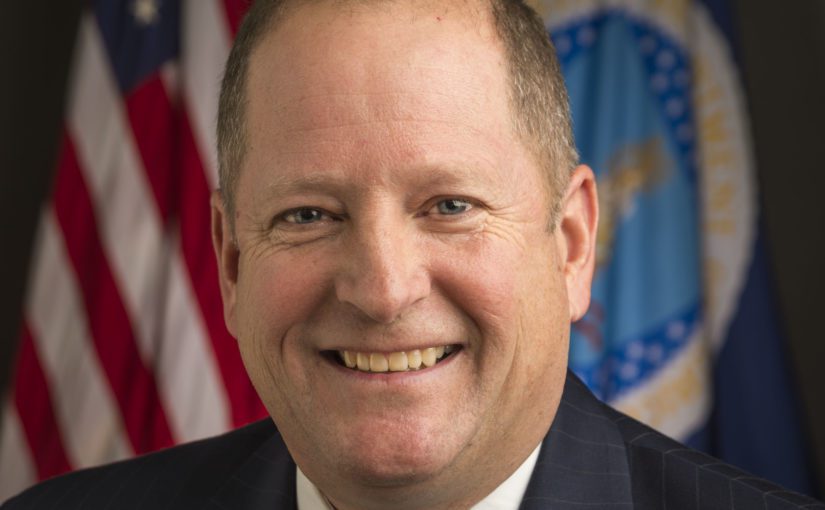May 28, 2020PMA event focuses on Farmers to Families, Coronavirus Food Assistance programs
A May 27 Produce Marketing Association virtual town hall featured Bruce Summers of the USDA Agricultural Marketing Service and Hunt Shipman of Cornerstone Government Affairs.
The topics of discussion were the overall progress of the Farmers to Families Food Box Program, as well as the recently announced Coronavirus Food Assistance Program (CFAP). The special session was extended from the usual 30 minutes into 45 minutes to allow for additional audience questions.
Produce Marketing Association (PMA)’s weekly Virtual Town Hall focused on upcoming and future government resources available to the industry.


The conversation was moderated by PMA’s Chief Science Officer, Max Teplitski and featured Summers, administrator of USDA’s Agricultural Marketing Service and Hunt Shipman, principal and director at Cornerstone Government Affairs.
The Farmers to Families Food Box program was announced in April and was put together rapidly, said Summers said.
“When thinking back where we were in the beginning of April, we really have come a long way,” Summers said. “Back then, farmers were forced to dump produce and lay off employees, and there were astonishingly long lines at food banks. This is what prompted us to put together this program, which started on April 17. On May 15, the first boxes were distributed so the turnaround for this program has been really amazing.”
So far, 52,000 boxes have been processed and there have been payments of almost $1 million, though Summers said this is very preliminary data. He anticipates that about one billion pounds of food can be distributed through this program across the produce, dairy and meat boxes.
“The first boxes went out on May 15 and we are starting to receive the first invoices this week, so it is a little early for good data on the program,” Summers said. “But we will have all this information about the dollar volumes and number of boxes available on the USDA website.”
The USDA received around 600 proposals for the program and ended up contracting 198 companies. “There were around four to five criteria for the program, and we had a whole team of contracting officials to review the proposals. We met with each of the companies who weren’t contracted and discussed with them why they weren’t chosen and what they could have done differently. There is are still a lot of decisions to be made about how we will approach the next round at the end of June but – unless there’s an amazing economic turnaround that will deem the program unnecessary – we are hoping to be able to extend the existing contracts if they are successful as well as bring in new contracts,” Summers said.
Due to the large demand in the industry and throughout the country, the process of contracting companies has been accelerated.
“This is a process that typically takes much longer but, because of the President’s declaration of emergency, we had a lot of flexibility to be able to put it together so quickly. That does mean, however, that there are many analyses that we usually conduct prior to contracting a company that are now being done post-contracting. With this, we look at the company’s safety and food plans, and ensure that the produce they are contracted for is 100% US-grown and that the boxes are being filled according to contract requirements. So far, it has been going well. We have terminated one of the contracts at this point, but that’s been the only one so far,” Summers said.
Flexibility was needed to set up this new program, and it will remain a requirement throughout the program’s execution.
“We understand that there is a seasonal aspect to the produce industry that is very important to keep in mind,” Summers said. “The products that were in season in April when the proposals were put together are not going to be the same products that will be coming around in June. So, if producers are wanting to alter the contents of their contracted boxes, this is something that will of course be allowed – in consultation with the contracting agent.”
USDA will continue to evaluate whether or not all communities are being served properly. “It is very important to us that we find out if there are any particular areas in the country that are currently being underserved and then address this by making adjustments in our approach in the upcoming round,” Summers said.
CFAP program
Hunt Shipman, the principal and director at Cornerstone Government Affairs, addressed the newly released CFAP program as well as the audience questions relating to this topic. He says:


“This is a $16 billion program that was announced last week, and it was implemented specifically to support the producers – and includes specialty crop producers. As of May 2, producers can start applying for funds through this program,” Shipman said.
“For the specialty crop producers, there are three categories that they can file under,” Shipman said. “First, if their products have experienced a price decrease of 5% or more between the months of January and April. The second category is for producers who have sold their product to a terminal market and their product ended up being destroyed, or payment was not received. Finally, the third category is for producers who have either been unable to harvest their product or decided not to harvest because there was no market for it at the time.
“It is important to note that the list of specialty crops that are included in the program is in no terms a final list – it was put together based on the information available, and if there are products that should be included in the list but aren’t currently, we encourage you to reach out to us about it,” he adds.
“The biggest challenge is going to be on the restaurant side, I believe,” Summers said in anticipating what could come next. “Everything will slowly be reopening, and the customers will be coming back. It may take some time, but we are optimistic that the customers will return. There will be many challenges, but I think we are up to the challenge of facing them.”
“The amount of action taken by the government to implement these programs has been amazing,” Shipman said. “So, I’m very optimistic, and the overall government reactions make it that much more likely that concerns will continue to be addressed as we enter the new normal.”
– Gary Pullano, VGN Managing Editor















